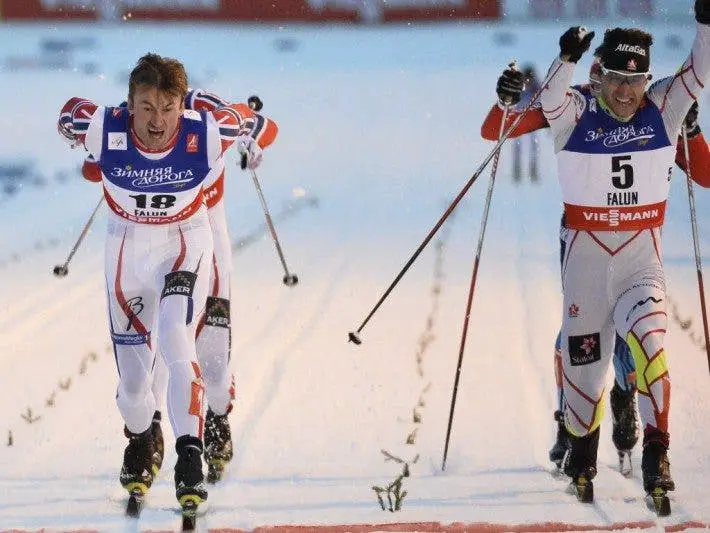The ability to efficiently use metabolic energy to produce work is a key factor in performance in sports such as cross-country skiing. Efficiency derives from the relationship between work rate and total metabolic rate and is expressed as the energy efficiency of the musculoskeletal system.
In cross-country skiing, skiers have to adjust their technique according to speed and terrain and they do this by coordinating the work of the upper and lower limbs. The best skiers in general show greater technical efficiency and use longer cycles with both their legs and arms.
Fatigue modifies technique

The loss of speed in technical execution is associated with a state of fatigue in the lower and upper extremities, however, neither the duration of the cycle, nor the alterations in the cycle were correlated with the reduction of the speed in the movement. A state of fatigue in the lower extremities can be even more influential in skating technique than in classical technique, we must also bear in mind that changes in coordination can occur due to general exhaustion produced by overexertion.
Elite cross-country skiers have a high oxygen consumption value and a high tolerance capacity for blood lactate, just as in athletes with a lower physiological capacity when the intensity increases the ability to maintain the frequency of movement and the peak of force used in each impulse will be reflected in the amplitude of the step and the force that these can apply in each step and therefore we will see a loss of speed.
Skiers are able to reproduce the same amount of force during a test but are likely to apply force less effectively after high intensity exercise. However, the absence of scientific studies to determine these losses makes it impossible to give a sure answer to define what is really the factor that determines that the technique is modified during intense exercise.
Avoid modification in technique
Although elite skiers are able to maintain the same strength and power during a ski event, we can say that they will use a shorter cycle of movement when they increase the frequency or when the slope is very high (shorter steps). It is here when the highest values of oxygen consumption are manifested, the levels of lactate in the blood, and the heart rate reach values close to the maximum. Therefore, it is reasonable to conclude that cross-country skiers employ a less efficient technique after high intensity exercise (a climb, a change of pace, a sprint to reach the group, etc.). Consequently, athletes in sports such as cross-country skiing where the technique is very complex, can improve their performance through technical work at high intensity. In cross-country skiing, the ability to maintain effective and highly efficient technique can be especially relevant in sprint-type competitions where skiers run a qualifying race against the clock and 3 separate heats.
References
- Ettema G, Loras HW. Efficiency in cycling: a review. Eur J Appl Physiol. 2009; 106 (1): 1–14. PubMed doi: 10.1007 / s00421-009-1008-7.
- Benedict FG, Cathcart EP. Muscular Work. A Metabolic Study With Special Reference to the Efficiency of the Human Body as a Machine. Washington, DC: Carnegie Institution of Washington; 1913.
- Sahlin K, Sorensen JB, Gladden LB, Rossiter HB, Pedersen PK. Prior heavy exercise eliminates VO2 slow component and reduces efficiency during submaximal exercise in humans. J Physiol. 2005; 564 (Pt 3): 765–773. PubMed doi: 10.1113 / jphysiol.2005.083840.
- de Koning JJ, Noordhof DA, Lucia A, Foster C. Factors affecting gross efficiency in cycling. Int J Sports Med. 2012; 33 (11): 880–885. PubMed doi: 10.1055 / s-0032-1306285.